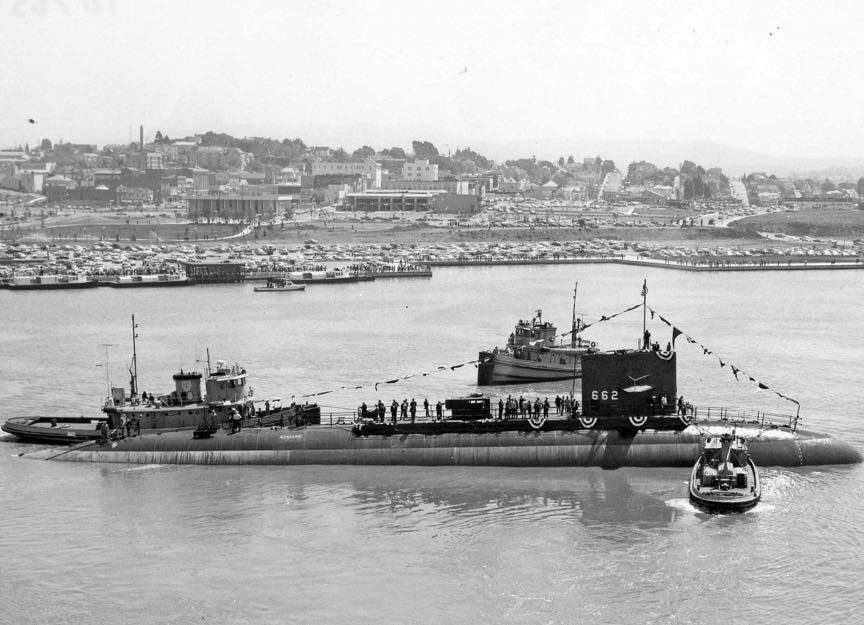Gurnard II SS(N)-662

Gurnard
(SS(N)-662: dp. 3,800 (surf.) 4,600 (subm.); 1. 292'3";
b. 31'8"; cpl. 107; a. 421" tt.; cl. Sturgeon)
The second Gurnard (SS(N) 662), a Sturgeon-Class nuclear submarine, was laid down 22 December 1964 by the San Francisco Bay Naval Shipyard, Vallejo. Calif.; launched 20 May 1967; sponsored by Mrs. George P. Miller, and completed in the fall of 1968. Once commissioned, she will become a key element in the underwater deterrent force of the Navy and will contribute vitally to the continuing task of "keeping the peace" over the vast reaches of global waters. Designed to attack and destroy all types of enemy ships, her ability to operator long periods at great depths and at high submerged speed will make her a potent and effective challenge to enemy submarines. Operating under nuclear power, she will be able to conduct long-range reconnaissance patrols and surveillance missions without risking detection by surface ships. Moreover, she will be able to carry out extensive ASW operations, either alone or with other fleet submarines or with destroyer-type surface ships.
Gurnard operated in the Arctic Ocean under the polar ice cap from September to November 1984 in company with one of her sister ships, the attack submarine USS Pintado (SSN-672). On 12 November 1984 Gurnard and Pintado became the third pair of submarines to surface together at the North Pole. In March 1990, Gurnard deployed to the Arctic region during exercise Ice Ex '90 and completed only the fourth winter submerged transit of the Bering and Seas. Gurnard surfaced at the North Pole on April 18, in the company of the USS Seahorse (SSN-669).
Gurnard was decommissioned on 28 April 1995 and stricken from the Naval Vessel Register the same day. Her scrapping via the Nuclear-Powered Ship and Submarine Recycling Program at Puget Sound Naval Shipyard in Bremerton, Washington, was completed on 15 October 1997.
